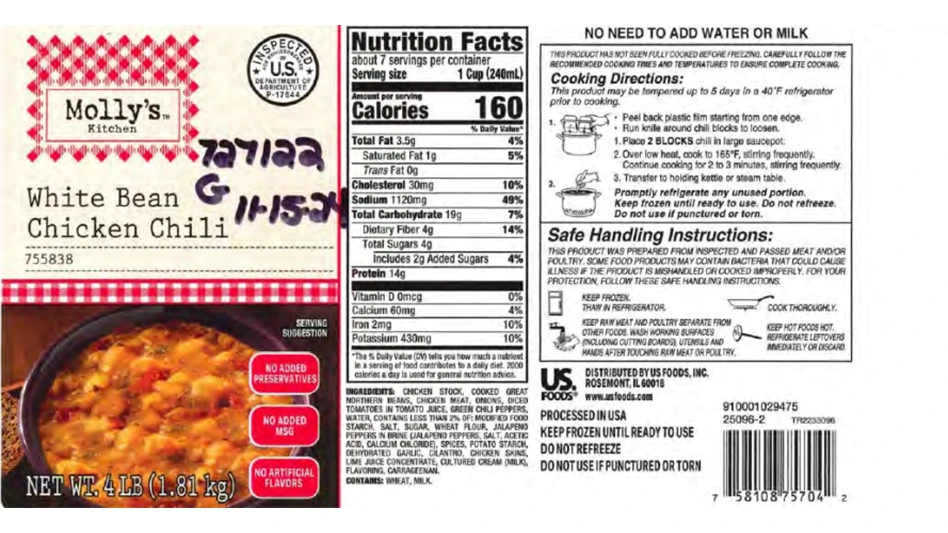
Psocids are very small insects that can cause big problems in the food industry. Psocids, also known as book or bark lice, have long been known to occur in grain storage and processing facilities, but have become more significant pests of the food industry in recent years. A range of psocid species can be found in food facilities, and each has its unique behavior, biology, and response to insecticides. Pest management programs for psocids can be challenging, and many species are not very susceptible to insecticides.
A critical part of integrated pest management is having an effective monitoring program, but this is not currently available for psocids. Given their small size and the limited availability of effective attractants and traps, detection of these insects before they reach damaging levels can be challenging.
Most traps and attractants currently used for other stored product species do not work well for detecting psocids. Pieces of corrugated cardboard have been shown to be an effective method to collect psocids if placed in areas where they are active. However, cardboard doesn’t necessarily attract psocids from a distance, and collecting, identifying, and counting psocids from the cardboard is labor intensive.
Researchers at USDA’s Agricultural Research Service (ARS) have been conducting research for a number of years on identification of attractants that are effective for stored product psocid species and could be incorporated into traps to improve monitoring.
Psocids tend to be attracted to higher moisture grain and areas in grain with higher temperatures. But the first question we wanted to look at when identifying attractants for traps was how psocids responded to different food odors. We evaluated a wide range of food materials, such as whole and cracked grains and grain-based oils, and it was determined that brewer’s yeast, wheat germ, and wheat-germ oil elicited the strongest responses from the greatest range of psocid species. Although psocid species and stages varied in their level of response, these materials were the most consistently strong in terms of attraction.
Next, we evaluated if psocids were attracted to light. In our initial studies, we used one of the most common stored product psocid species — Liposcelis bostrychophila. (Unfortunately, stored product psocids do not have any common names, so we need use the Latin genus and species names commonly used by scientists.) We showed that this species was strongly attracted to UV light.
By using LED lights that produce specific wavelengths, we determined that 351 nm wavelength UV light had the strongest response. This light was still attractive when psocids were given a choice between the light and brewer’s yeast, which suggests that it might be able to compete against other food attractants that are present in food facilities. However, combining 351 nm UV light with brewer’s yeast did not increase the response over either alone, although a trap using a combination of light and food attractants may still be the best approach.
Next, we evaluated the response to light for other important pest psocids. Unfortunately, attraction was variable, so no single light attractant would work for all species. For example, Liposcelis entomophila did not respond to any wavelength light, and L. brunnea responded equally to a wide range of different wavelengths.
Currently, these are still experimental results, and there are no commercial traps using these attractants or that specifically target psocids. We plan to conduct further research to identify how to effectively combine these attractants with trap designs that optimize psocid captures. (For more detailed information, visit the ARS Stored Product Insect and Engineering Research website for links to the supporting publications, https://bit.ly/2A58JJm).

Explore the December 2018 Issue
Check out more from this issue and find your next story to read.
Latest from Quality Assurance & Food Safety
- Boston Sword & Tuna Protects Seafood Safety with Mettler-Toledo Metal Detectors
- IFT Releases New Resources to Aid Food and Beverage Industry in Sugar Reduction
- Yum! Brands CEO David Gibbs to Retire in 2026
- Penn State Extension Offers Short Course on Food Microbiology and Safety for Food Plant Workers
- Johnsonville Recalls Cheddar Bratwurst Due to Possible Plastic Contamination
- Cabot Creamery Butter Recalled Due to Possible Fecal Contamination
- USDA Delays Salmonella Testing Program for Breaded Stuffed Chicken
- FDA Extends Comment Period on Poppy Seeds to June 16





